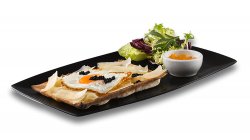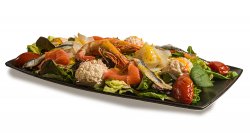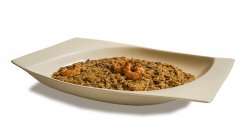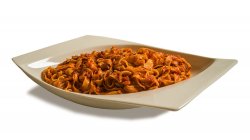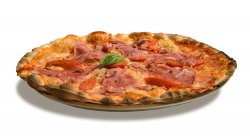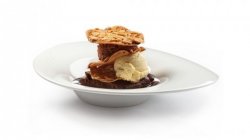

Flavors of Lombardy
Lombardy is located in the north, bordering with Switzerland, Piedmont, Veneto, Trentino-Alto to the north and Emilia-Romana to the south. One third of Italian exports are shipped from here. The region, which boasts stunning landscapes and continental climate, has the highest per capita income in the country. The mountains in the north slowly turn into hills as we move south towards the plains. The pre-Alpine area is dotted with large glacial lakes, including Lake Maggiore, Lake Lugano, Lake Como, Lake Iseo, Lake Idro and Lake Garda, the largest in Italy. This region is crisscrossed by rivers that irrigate its farmlands.
Lombardy takes its name from the Germanic Lombard tribe, which barely left their footprint on local customs beyond the crown on its coat of arms. Apart from the Lombards, Etruscans, Austrians, Spanish and French passed through this area and left their mark on the local cuisine. Milan, the capital of Lombardy, has great influence over regional cuisine. Frederick I, King of the Holy Roman Emperor, also known as Barbarossa razed the city in 1162. One of the most important historical events took place during the reconstruction of Milan, which influenced Lombardy's landscape and, therefore, its cuisine. The Milanese, who were not happy with the endeavor of having to rebuild their city completely, built an irrigation system around the Naviglio Grande. The backwaters in some areas were redistributed, while wetlands were drained to irrigate drier lands. It took 278 years to be complete the whole system. The navigable waterways enabled the transport of goods, far away from the dangerous roads frequented by bandits.
The new irrigation system allowed Lombard farmers to grow rice in the valleys of Lomellina, between Pavia and Piedmont, and water the pastures were sheep and cattle grazed. Lombardy boasts excellent meat and an enviable dairy industry. It is home to famous cheeses, including Gorgonzola, Grana Padano, Mascarpone (essential for our Pizza Mascarpone, as well as Speck from Trentino Alto Adige), Taleggio, Branzi or Robila. Rice farming has made Lombard natives die-hard risotto lovers. Spain's influence can be seen in the use of saffron in Risotto alla Milanese, although it would be going too far to claim, as some authors do, that it is a direct descendent of paella. Risottos are a staple in family meals on weekends. They can be made with virtually any ingredient: mushrooms, vegetables, fish or seafood. Austrian influence can be seen in dishes such as Wiener Schnietzel, the typical Milanese cutlet known as cotoletta in Italian.
It is not easy to talk about Lombard cuisine in general terms. Like other northern regions, the rugged terrain has made communication between different peoples difficult, hindering the exchange of local customs between neighboring towns. Hence, culinary traditions within each province vary significantly: Bergamo has a strong Venetian influence, Mantua, once ruled by the Gonzaga family, has a very aristocratic culinary heritage, influenced of Emilia-Romagna, and Valtellina features protein-rich mountain cuisine based on local resources, including game. What they have in common is the use of butter, lard and cream to cook. The Lombards, who share the climate (and calorie needs) with their Germanic ancestors, inherited their healthy appetite and hearty meals to cope with the long, cold winters. As the altitude decreases, the diet shifts from protein-rich Alpine cuisine to carbohydrate-based dishes of the lowlands. Both cuisines rely heavily on local produce. One thing lacking in Lombard cuisine are fish dishes, despite Milan being home to the best wholesale fish market in Italy. We recommend a visit to the city's seafood restaurants, even though they bear no relation with local culinary traditions. We will slowly travel through each province in this region and, believe us, there is a lot more to the story! We are eager to share this journey with you…+
45.4790671, 9.8452433
Lombardía
Lombardy is the most populated region in Italy with the highest per capita income. The capital is Milan. The region borders to the north with Switzerland (Ticino and Graubünden), west with Piedmont, east with Veneto and Trentino-Alto Adige, and south with Emilia-Romagna.
City: 9.909.348 hab.
Surface area: 23.863 kmª
Categories
